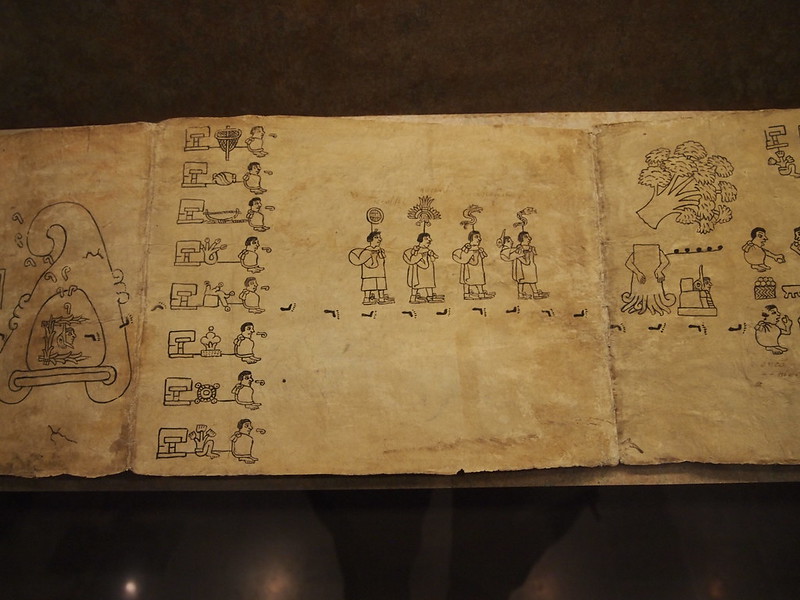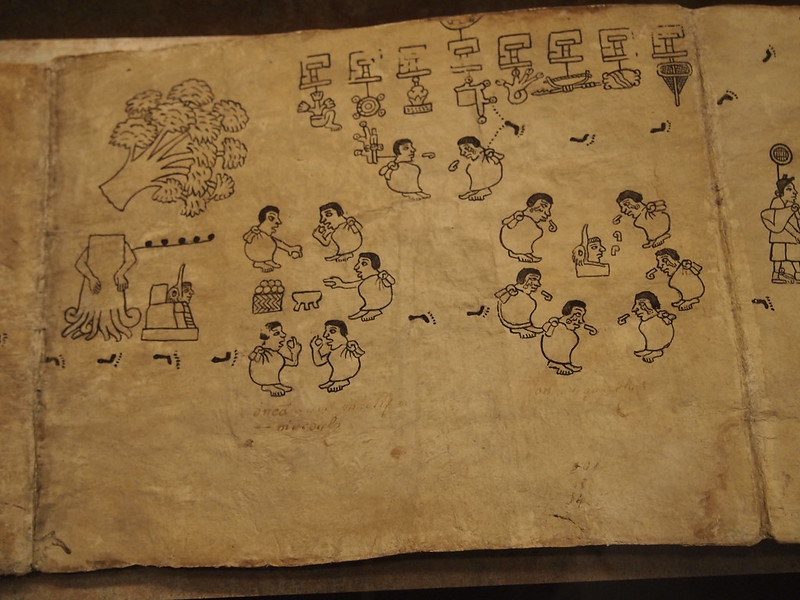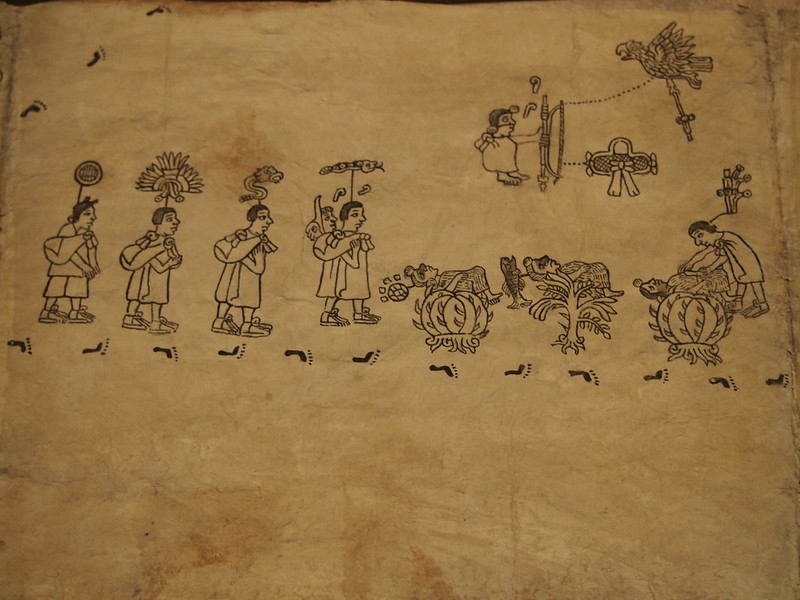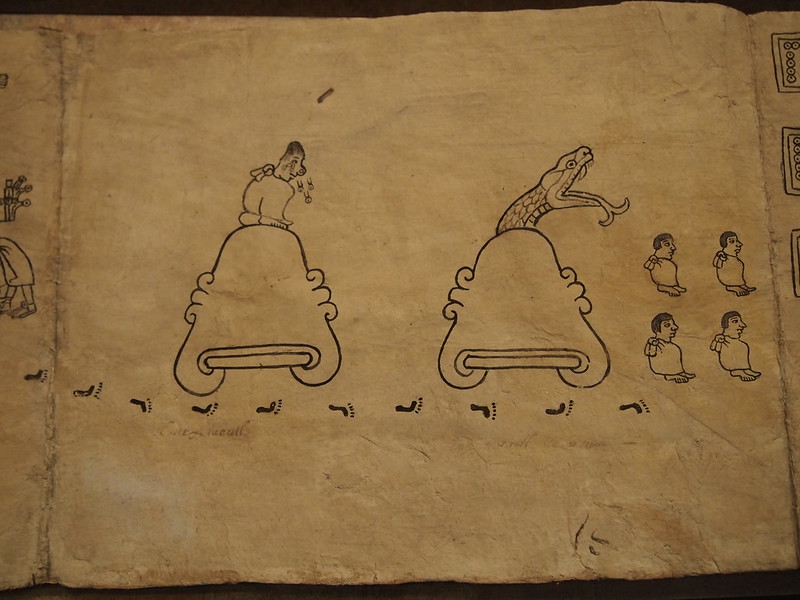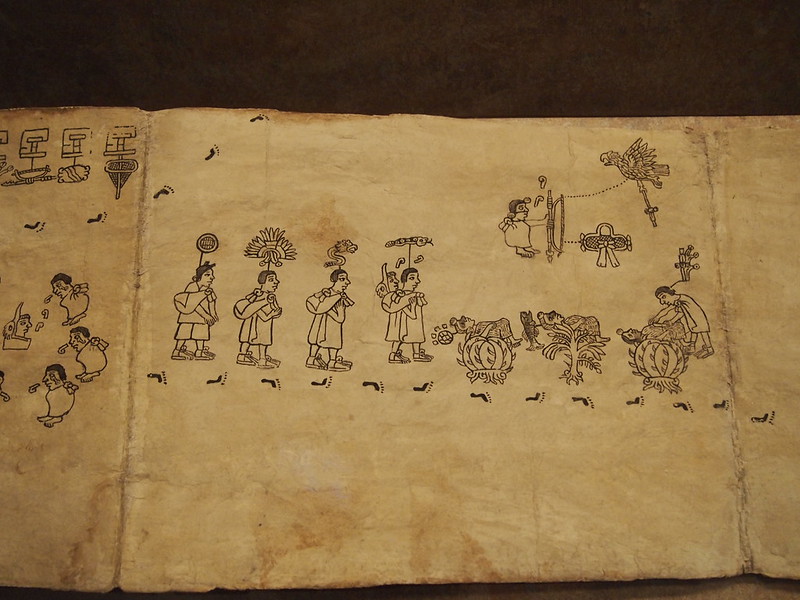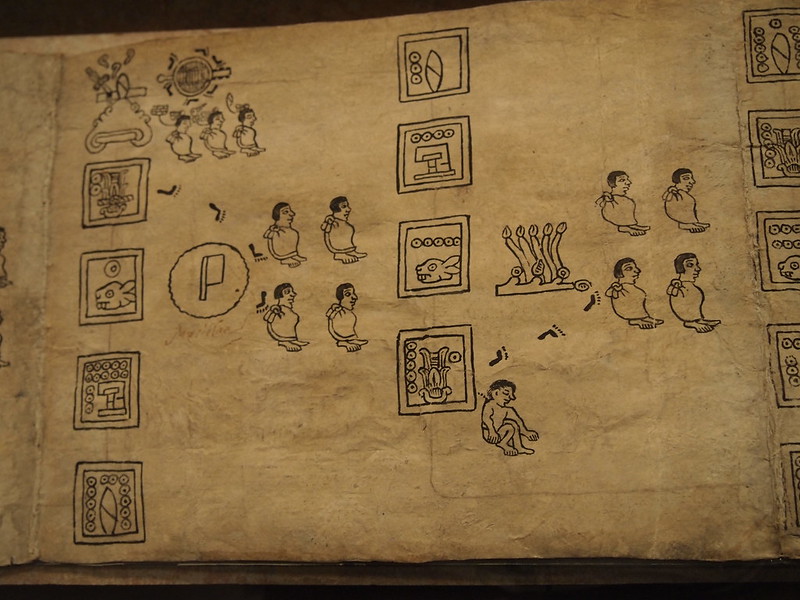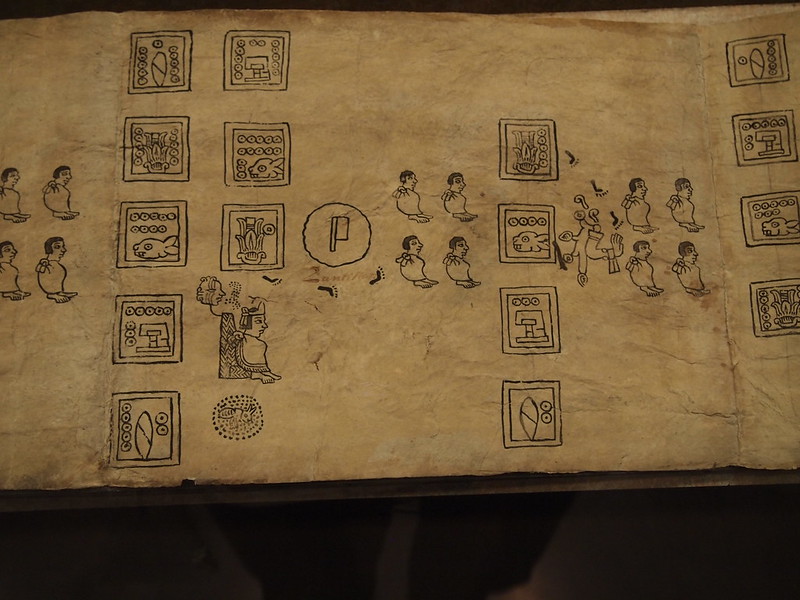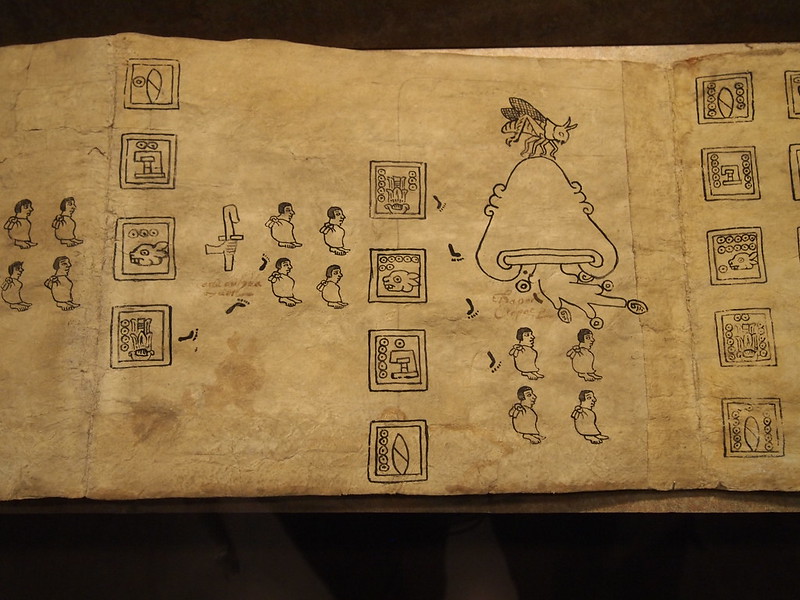Yesterday while doing research on Huitlacoche (Corn Smut) I ended up trying to find the Florentine Codex (before 1519) to find any images or reference in which Corn Smut was supposedly mentioned. This reminded me that once I did get to see the Borturini Codex in Mexico City at the Museo Nacional de Antropologia, which has been the most amazing archaeological museum I have seen up to this point in my life.
The Codex Borturini is named after one of its first European owners, Lorenzo Borturini Benaducci (1702-1751), which seems a strange way to name a historical codex through all of antiquity, but I guess the name remains as its only reference. It is also known as “Tira de la Peregrinación” (“The Strip Showing the Travels”). It was painted sometime between 1530 and 1541 and is a pictorial depiction of the legendary migration of the Aztecs from the island of Aztlán to the Valley of Mexico. No thanks to the Spanish these old codices are an important primary sources for our present understanding of Aztec culture.
The Codex is produced on one continuous sheet of fig bark that is accordion-folded into 22 pages – but it seems to end prematurely with a rip in the middle of page 22 without an indication of whether the pictorial tale was complete or not at that point. The line drawings are not coloured in but they are still very fantastic – I had not expected such an ancient travelogue to look quite so – whimsical?
You can see a small version of all 21.5 plates on the spanish wikipedia entry for Tira de la Peregrinación, but here are some selected images I took when I saw it last year.

